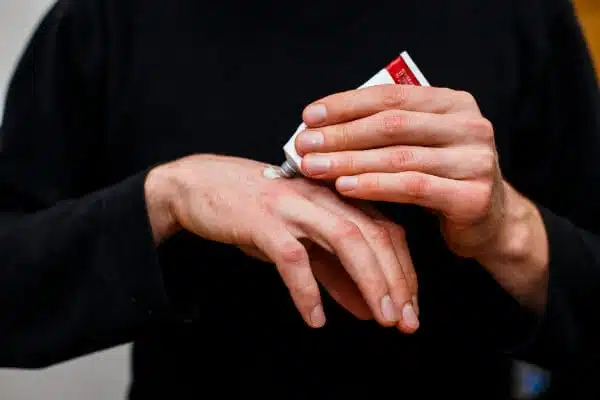Treating eczema – a stepped approach
The recommended first-line (basic) treatments for most cases of eczema are emollients and topical steroids. Paste bandages and wet wraps may be a helpful addition for some people, particularly where scratching is a major problem. Sedating-type antihistamines may be useful in helping with sleeping at night (they do not help the itch in eczema). Long-term use is not recommended.

When there is an inadequate response to appropriate strengths of topical steroid, or if these are not tolerated, especially on areas of delicate skin, topical calcineurin inhibitors – the cream pimecrolimus (Elidel) or the ointment tacrolimus (Protopic) – may be useful.
Treatments for more severe eczema, or ‘additional treatments’, include phototherapy, oral steroids, immunosuppressant drugs, a biologic drug and a Janus kinase (JAK) inhibitor.
Before progressing to additional treatments, it is essential to check that there is no other explanation for the eczema being uncontrolled. The following are examples of questions that should be considered by your doctor, but it is not an exhaustive list:
- Have all topical therapies (with extensive education) been used to the highest dose possible that is safe? (For topical steroids, the quantity and potency should be taken into consideration, plus age, body site and the extent of the condition. For more information on topical steroids, including information on the amount to use based on the Finger Tip Unit (FTU), please see our Topical steroids factsheet.
- Have all irritants and allergens been identified and avoided to the extent practicable?
- Has infection been controlled? (This may be bacterial, e.g. Staphylococcus aureus and/or viral, e.g. herpes simplex.)
- Is the eczema diagnosis correct? (Sometimes other diseases can exist alongside or be confused with eczema.)
Have a look at our factsheets to find out more about different eczema treatments.
